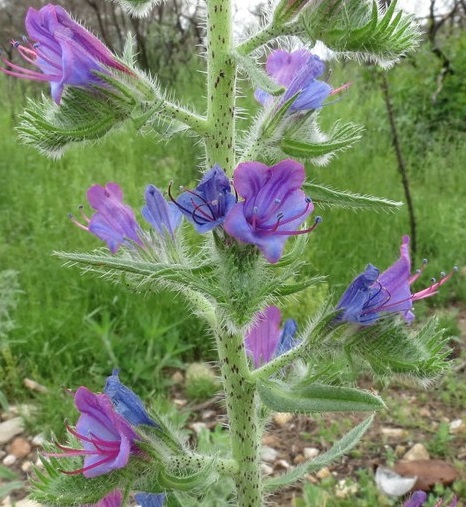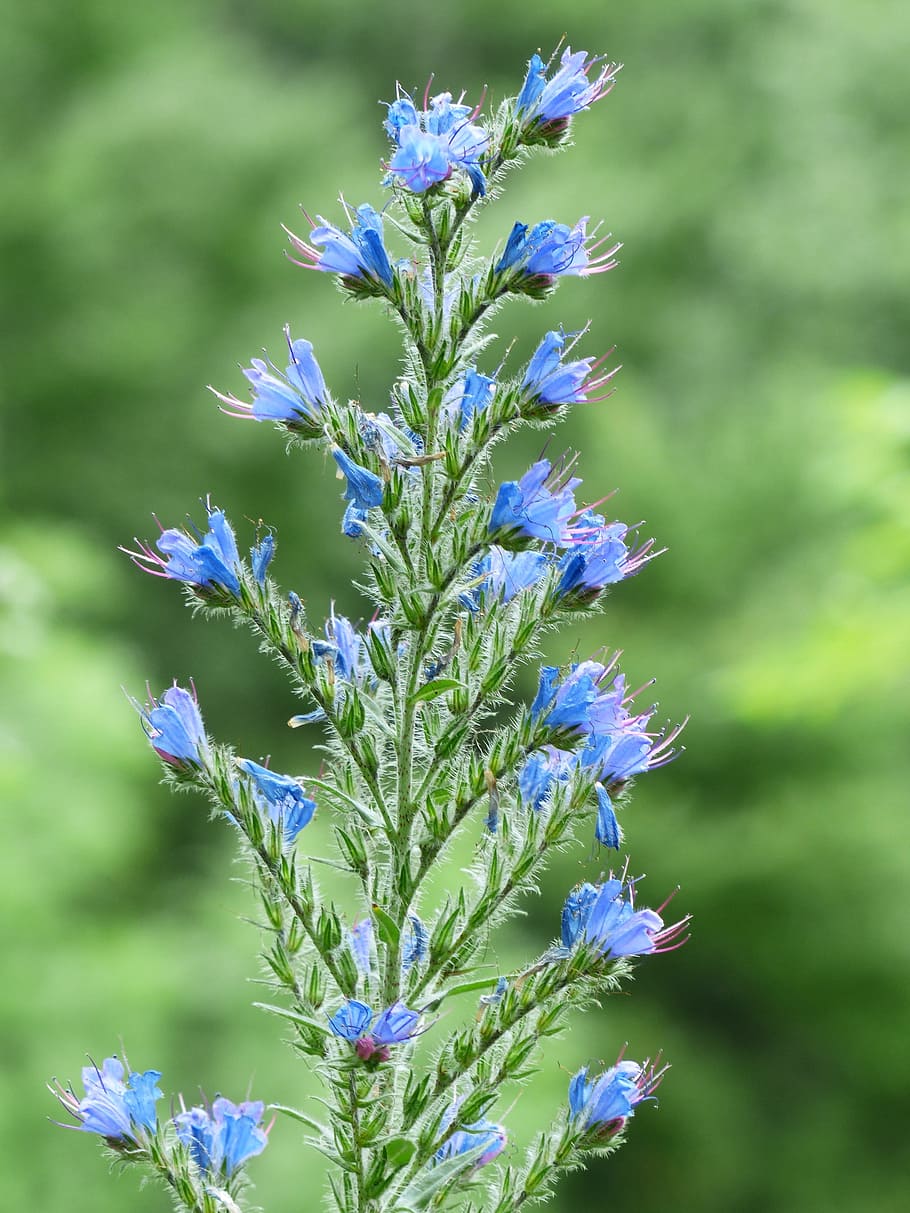Blueweed

Blueweed
(Echium vulgare)
Priority: - Contain / Annual Control
Tags: Agricultural | Terrestrial | Toxic
Identification and Reproduction
Identification
- Blueweed is a biennial or a short-lived perennial growing 30-80 cm tall.
- The main stem is stiff and rough, covered in hairs. The lower portion of the stalk will have purple blotches.
- Leaves are oblong to lance-shaped and are covered in white hairs.
- This plant has bright blue to purple flowers that are made up of 5 segments.
Reproduction
Primarily reproduces by seed; each plant can disperse up to 2,800 seeds, which can be transported by animals and humans.
Habitat & Ecology
Blueweed prefers warm sites at a southern aspect. It is a common weed in rangelands, roadsides and recently disturbed sites.
Impacts
Social:
- Rapidly invades pastures and rangelands. This plants may be harmful to livestock because of its spikey hairs and its toxic alkaloids
- May cause dermatitis when touched.
- Blueweed also is a vector for crop-damaging pathogens.
Ecological:
Blueweed will rapidly take over open pasture and grasslands, displacing native species.
Management
Mechanical/Manual Control:
- Mowing is effective to reduce root reserves and prevent seed production.
- Hand pulling can be done if soil is loose and the entire taproot can be removed in its entirety. If the soil is too compact an alternative is to cut the stem right below ground level.
- Be sure to wear gloves and long sleeves to prevent skin exposure.
For alternative planting options to blueweed use the ISCBC's Grow Me Instead guide.
Resources
Download A Guide to Weeds in British Columbia for Blueweed here.
Header photo (SanduStefan).
Photo Gallery


×






